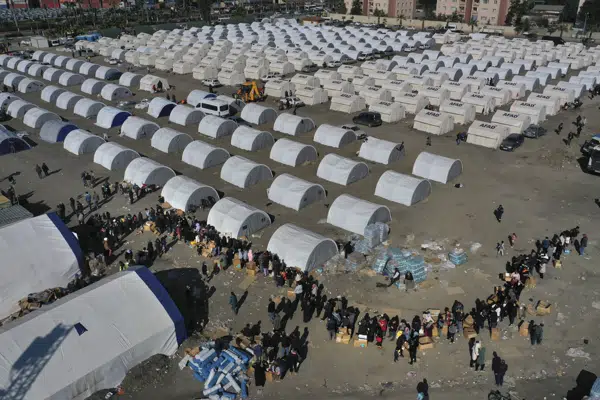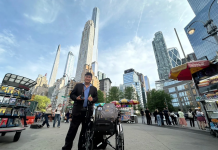SAMANDAG, TURKEY (AFP) — Nearly two weeks after a powerful earthquake destroyed tens of thousands of buildings in Turkey and Syria, displacing millions of people from their homes, many of them Still struggling to meet their basic needs, some sleep in tents, factories or trains. cars and greenhouses.
People who were forced to leave their homes in the disaster area described various situations as follows.
Some were able to take regular hot showers, while others were afraid to freeze to death.
The Turkish government and dozens of aid organizations have launched large-scale aid measures. The government said Wednesday that more than 5,400 shipping containers have been provided and more than 200,000 tents have been shipped to the shelter.
But it faces a tremendous catastrophe. The government says at least 84,000 buildings, including more than 332,000 homes, collapsed or were too damaged to be used in the February 6 earthquake. There are no official figures on the number of displaced persons on the Turkish side of the disaster area, which is home to around 14 million people, or 16% of the country’s population.
Buyuknacar, a village just a few kilometers from the epicenter of the magnitude 7.8 earthquake, was heavily damaged, killing 158 people. Two days after the first tremor he was transported by military helicopters, and on the fifth day the roads were cleared. Umut Shitil, 45, said:“First of all, our basic needs are containers. You can’t use tents here. … People in tents freeze to death.”
President Recep Tayyip Erdogan said on Tuesday that 2.2 million people had left the affected areas. This covered the housing needs of 1.6 million people, including about 890,000 in public facilities such as student dormitories and about 50,000 in hotels. The Ministry of Transport said Wednesday that the government has helped evacuate more than 272,000 people by air, sea and rail. However, many people prefer to stay close to home to protect their belongings, wait for the recovery of a relative’s body, or look after livestock in rural areas.
Others seeking protection from winter temperatures rely on structures that block out the elements.
Farmers in the Samandag district near the Mediterranean coast of Hatay, one of the worst-hit provinces, have evacuated from their damaged homes to large greenhouses usually used to grow tomatoes, using recyclable bedding and cooking. I brought all my equipment.
About 2,000 people now live under the plastic cover, according to locals. Many people lost not only their homes but also their livestock.
“The earthquake destroyed our houses, so there is no safe place except the greenhouse,” said Ozkan Sagartych, who is in his 50s.
Villagers have installed wood-burning stoves in greenhouses and are cooking food provided by aid organizations.
Other refugees have found relatively stable shelter. Elsewhere in Hatay, the Yuksel family took refuge in a metal factory and were provided with basic necessities such as clothing and household items. About 1,600 people from the nearby town of Dolchol stayed at the factory in the first days after the earthquake, but half then left for other parts of Turkey.
Displaced people have access to shared bathrooms with hot water, a laundry room and a small kitchen. They sleep in offices, shipping containers, or trailers.
In addition to being provided with warm shelter, the army provided three meals a day.
Qatar has sent shelters where soccer fans were housed during last year’s World Cup. Many other countries have also sent tents and containers.
Residents of Kahramanmara, the provincial capital of the same name, also complained of difficulties in finding accommodation.
Saturday, December 6, 2025
More
Home Climate Natural Disaster and Tragedies Turkey earthquake victims sleep in trains, tents, greenhouses
© London Post, All Rights Reserved by Independent Media Group UK Limited.






